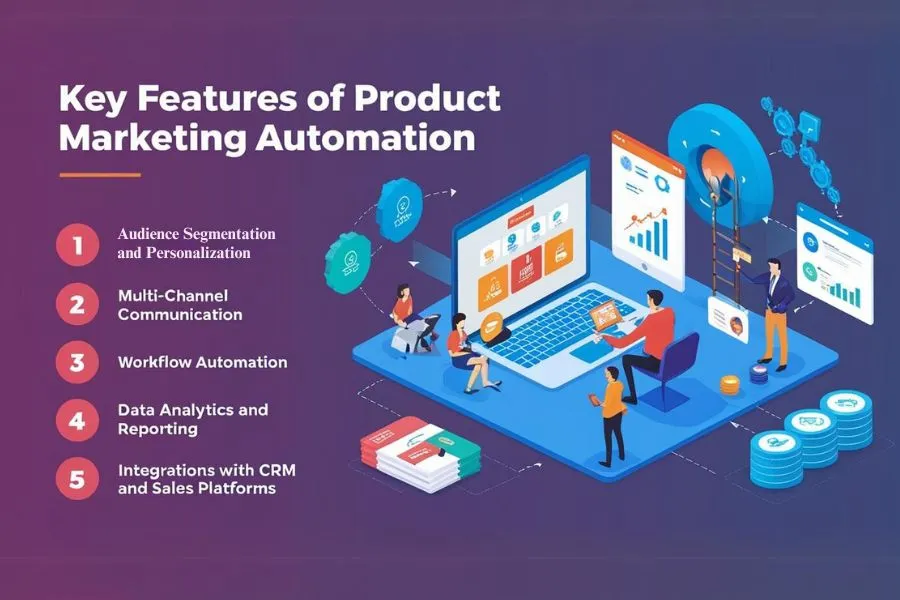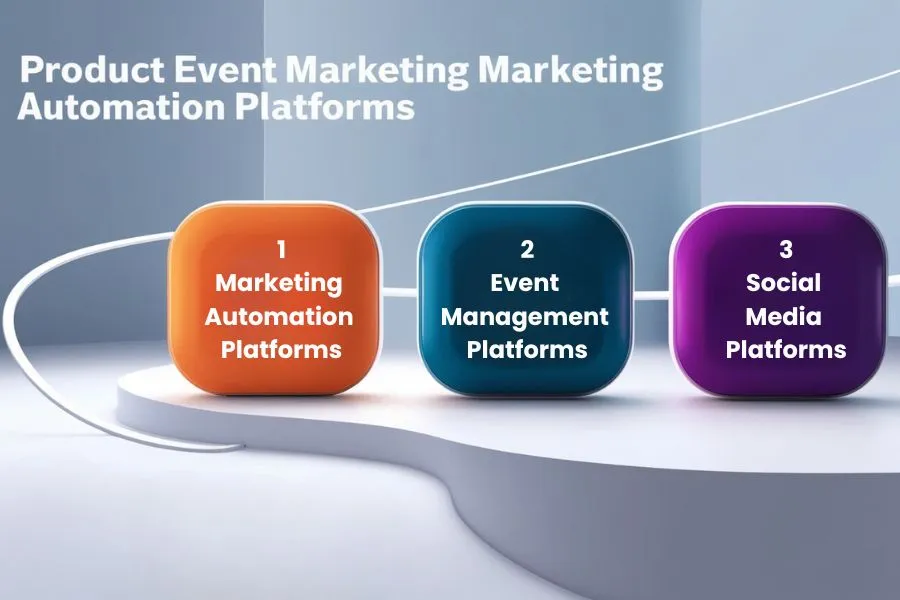Table of Contents
Introduction
Product events are crucial for showcasing innovations, launching products, and engaging with target audiences. Product Events Marketing Automation has emerged as a powerful tool to streamline these events and ensure a seamless experience for participants and organizers alike. But what exactly does it entail? And how can brands use it effectively? This blog explores the essentials of Product Events Marketing Automation, breaking down its core features and offering best practices to help marketers maximize its impact.
Understanding Product Events Marketing Automation
Product Events Marketing Automation refers to the use of specialized software to automate tasks related to marketing product-centered events, such as product launches, webinars, and customer appreciation events. Unlike traditional marketing, which focuses on broad engagement, product events automation targets specific product-centric events, offering greater personalization and integration across channels.
Key Features of Product Events Marketing Automation

1. Audience Segmentation and Personalization
Segmenting audiences allows marketers to deliver targeted messages to different groups based on their interests, demographics, or purchasing behavior.
For instance, a SaaS company might use segmentation to tailor messages to customers versus prospects, ensuring each segment receives relevant information about the product.
2. Multi-Channel Communication
One of the standout features of product event automation is the ability to connect with audiences through various channels like email, social media, and SMS. By unifying communications across platforms, marketers can ensure a cohesive and consistent experience for attendees.
- Email: Send personalized invitations, reminders, and post-event follow-ups.
- Social Media: Promote the event on relevant platforms like LinkedIn, Twitter, and Facebook, using targeted ads and engaging content.
- SMS: Send timely reminders and updates to attendees.
3. Workflow Automation
Workflow automation is at the core of product events marketing, allowing repetitive tasks to be set up as automated sequences. With automated workflows, marketers can set triggers that send reminders, follow-ups, or personalized content, freeing up time for strategic planning.
Trigger: Attendee registers for the event.
Action: Send a personalized welcome email with event details and a link to the agenda.
4. Data Analytics and Reporting
To measure the success of an event, it’s crucial to track key metrics. Product events automation tools provide detailed analytics, such as open rates, click-through rates, and engagement scores, to give marketers insights into how well their event performed and areas for improvement.
Track: Open rates, click-through rates, registration numbers, attendance rates, survey responses, and post-event engagement.
Analyze: Identify trends, areas of improvement, and successful strategies.
Report: Share insights with the team to inform future event planning.
5. Integrations with CRM and Sales Platforms
Connecting your marketing automation platform with CRM and sales platforms is essential for aligning marketing efforts with sales objectives. By syncing data, marketers can ensure that both teams work with accurate, up-to-date information, enhancing the follow-up and sales processes post-event.
Sync Data: Transfer attendee information, engagement data, and survey responses to the CRM.
Automate Follow-up: Trigger personalized sales outreach based on attendee behavior and interests.
Align Teams: Ensure sales and marketing teams work collaboratively to maximize lead conversion and customer retention.
Product Events Marketing Automation Best Practices
1. Pre-Event Planning and Preparation
Before any event, planning is key. Create audience segments, determine messaging strategies, and set up automated workflows to simplify the process once the event begins.
Audience Segmentation:
- Segment attendees based on job roles (e.g., managers, team leads, individual contributors) and industry (e.g., tech, finance, healthcare).
Messaging Strategy:
- Develop personalized email invitations highlighting the specific benefits of the tool relevant to each segment.
Automated Workflows:
- Set up a workflow to send personalized email reminders and countdown timers leading up to the event.
2. Engaging Attendees with Personalized Content
Sending personalized emails, targeted ads, and SMS reminders ensures attendees feel valued and are more likely to engage with the event. Consider using attendee names and past interactions to add a personal touch.
Personalized Emails:
- Send emails with the attendee’s name and a tailored message, such as “Hi [Attendee Name], we’re excited to share how our new AI tool can streamline your [specific job role] tasks.”
Targeted Ads:
- Use retargeting ads on social media to reach attendees who haven’t registered yet, showcasing the unique features of the tool.
SMS Reminders:
- Send SMS reminders with a direct link to the webinar and a clear call to action.
3. Leveraging Multi-Channel Strategies
To reach attendees where they are, utilize a mix of channels like social media, email, and SMS. Multi-channel strategies maximize exposure, making it easier for attendees to connect with your brand and event.
Social Media:
- Create your event hashtag and encourage people to share their experiences on social media platforms.
- Use live tweets and Q&A sessions during the webinar to increase engagement.
Email:
- Send regular email updates about the event, including speaker introductions, agenda, and exclusive offers.
SMS:
- Send last-minute reminders and post-event follow-ups via SMS.
4. Post-Event Follow-Up and Nurturing
Post-event engagement is just as crucial as pre-event preparation. Set up automated thank-you emails, surveys, and follow-ups to continue nurturing leads and gathering feedback on their experience.
Automated Thank-You Emails:
- Send personalized thank-you emails with a link to the webinar recording and additional resources.
Surveys:
- Send surveys to gather feedback on the webinar content, presentation, and overall experience.
Follow-up Emails:
- Set up a drip campaign to nurture leads who attended the webinar, offering additional information, product demos, and special promotions.
5. Monitoring KPIs and Adjusting Strategies
After each event, monitor performance metrics to assess what worked and what didn’t. Use these insights to refine your approach for future events, continually optimizing for better results.
Key Performance Indicators (KPIs):
- Track metrics such as webinar attendance rate, email open and click-through rates, social media engagement, and survey responses.
Data Analysis:
- Analyze the data to identify areas for improvement, such as optimizing email subject lines, refining webinar content, or targeting specific audience segments more effectively.
Strategy Refinement:
- Use the insights gained from the data analysis to adjust your marketing strategy for future events, ensuring a more impactful and successful experience.
Examples of Successful Product Events Marketing Automation
Some of the world’s top brands, like Apple and Tesla, have perfected their product events by integrating marketing automation.
For example, Apple’s product launch events are meticulously planned, leveraging email marketing, SMS, and social media to build anticipation and keep audiences engaged.
Choosing the Right Product Events Marketing Automation Platform

When choosing a platform, look for features that match your event goals, such as segmentation options, integration capabilities, and reporting functionalities. Platforms like HubSpot, Marketo, and Mailchimp are popular choices, each offering unique tools to enhance event automation.
1. Marketing Automation Platforms:
- Marketo: https://business.adobe.com/products/marketo.html
- HubSpot: https://www.hubspot.com/products/marketing
- Pardot: https://appexchange.salesforce.com/appxListingDetail?listingId=a0N300000016boHEAQ
2. Event Management Platforms:
- Cvent: https://www.cvent.com/
- Eventbrite: https://www.eventbrite.com/
- Zoom: https://www.zoom.com/
3. Social Media Platforms:
- Twitter: https://twitter.com/?lang=en
- LinkedIn: https://www.linkedin.com/
- Facebook: https://www.facebook.com/
Conclusion
Product Events Marketing Automation is a game-changer for companies aiming to maximize their event impact, from pre-event planning to post-event nurturing. By adopting best practices and leveraging key features, businesses can build stronger customer relationships, increase engagement, and drive higher returns on investment.
FAQs
1. What are the primary features to look for in a Product Events Marketing Automation tool?
Look for audience segmentation, multi-channel communication, workflow automation, data analytics, and CRM integration.
2. How can I personalize experiences for event attendees?
Use segmentation and personalize messaging based on attendee behavior, past interactions, and preferences.
3. What are the best strategies for post-event engagement?
Send follow-up emails, collect feedback through surveys, and nurture leads with targeted content to maintain engagement.
4. What metrics should I focus on in product events marketing?
Focus on open rates, click-through rates, engagement scores, and conversion rates to measure success.
5. How do I overcome data privacy concerns in automated marketing?
Choose platforms with secure integrations and compliance with data regulations to protect attendee information.

